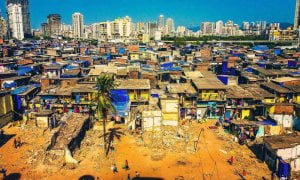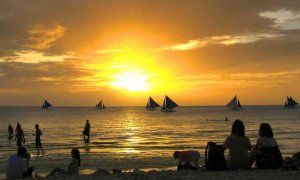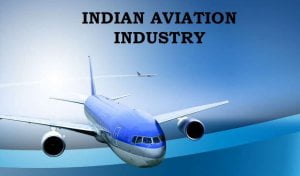There is always a motive behind everything happens in this world. Always there is a motivation in doing any work or anything. There are mainly two factors in behind happening anything it may be pull factors or push factors. In tourism, behind the movement of tourist there are various motives, it may may be leisure, business, pilgrimage or any other.
As we know tourism is a people centric and one of the fastest growing industry. Assessing behavior and motivations of tourist is a critical task as travel decisions of tourist depends on it. Travel has been a nomadic urge in human earlier in quest of food. As humanity grows desire for shelter came into being and with the rises of civilization search of trade bundles with safety and security. The game changing moment for mass tourism comes with the rise of leisure time. Assessing motivations of tourist is a critical task as travel decisions of tourist depends on it.
Travel Motivation
Motivation is an intrinsic property of a human-being that arises from the inside or of psychological origin. A combination of internal and external forces that motivates to drive the tourism industry. To satisfy all the levels of needs such psychological, physiological, etc. humans travels. It tells of tourist attempt to satisfy their recognized need and strongly influence decisions made by tourist in every steps of decision. Various theories have been developed to reveal the most important question why people travel?
The answer to this question is influenced by the nature of the travel motives.
 |
| Pic credit- https://www.youtube.com/watch?v=S71GIU8A9ss |
4. Types of Motivation
Motivation can be classified into categories:
1. Intrinsic Motivation:
this type of motivation comes from the inside through the core of the heart and mind of the tourist to do any specific work. t is defined as the performing of an activity for its intrinsic motivation that emerges from an individual’s inherent satisfactions, enjoyment, challenge entailed, interest or the feeling of inner pleasure that drives from the task rather than for some external pressures, or rewards or any separable consequence.
2. Extrinsic Motivation:
All the external factors which tends and individual to do any specific work. Individuals performs certain activities in order to attain or receive something from the outcomes. It involves executing an action influenced by the outer stimuli, to attain an external reinforcements or rewards from others such as money, praise, status etc.
Travel Motivation Theories
The tourist selecting to travel for business, leisure, pilgrimage, adventure or for other reasons, depends on motivation to visit destination. There are some common factors influencing tourist travel decisions such as
• Availability free time
• Disposable income
• Age and status
• Attractiveness of destinations
A. Gray’s Travel-Motivation Theory.
Gray explains the motivation of individual and given two motives for travel:
Wanderlust:
It describes the motive or the desire to go from a known to an unknown place. It is travelling from or leaving a familiar places to go and see different or unfamiliar places. It is about going to different destinations to experience monumental and socio-cultural heritage.
Sunlust:
It is a type of travel to a destination that can provide the tourist with specific facilities or better amenities. It is travelling for particular purpose or facilities that are not available in place of residence of the tourist.
B. McIntosh and Goeldner Categorization of Travel Motivation
McIntosh has stated that basic travel motivators may be grouped into four broad categories:
1. Physical Motivators
These types of motivation are concerned with the individual physical health and well-being involves physical relaxation and rest, sporting activities, medical care or treatment and specific remedial health management. It include physical motivators that are concern with health from recreation to attending yoga camp to medical treatment for upkeep of health.
2.Interpersonal Motivators
Human are social animal and always keen to make new friends, have a desire to visit and meet relatives and friends, or simply want to escape from the daily hassles of everyday life. These type of motivators are termed as interpersonal motivators.
3.Cultural Motivators
Cultural motivators are describe as curiosity that tourists have and want to experience different people’s cultures and lifestyle. These are related with tourists desire to travel to different destination, in order to know about other countries, people, their culture, tradition, life style, art, music etc.
4.Status and Prestige Motivators
Tourists travel to secure respect among their friends or in family and recognition of education and knowledge or for pursuit of hobbies. These types of motivators are identified with the need for fame and status or of personal esteem and personal development. It also include travel for business or professional interests.
C. Anomie and Ego Enhancement Motivation Theory
Dann investigated two push factors and proposes that motivational factors can be grouped into anomie and ego enhancement.
1.Anomie
Anomie refers to the need and desire to rise above the feeling of loneliness and quarantine inherent in everyday life and to get away from daily hassles. It is associated with search for life’s meaning and interaction with family and friends and social communication. The anomic tourists are mainly young, married, male mostly repeat visitors. They are from urban and rural areas and are above-average socio-economic status.
2.Ego enhancement
Ego-enhancement tourists are the opposite end of spectrum. It derived from desire and need for recognition. The individual’s desire and need for social recognition is mainly associated with it and is achieved through the status or ego enhance conferred by travel. Ego-enhancement tourists are likely to be female, married or single mostly first-time visitors. They are older than anomic tourists and typically from lower socio-economic group.
Dann argues that push factors are logically, and often an antecedent to pull factors. The question that ‘what makes tourists travel’ can only be recognized through the push factors. As the tourist to take two different difficult decisions at two diverse times i.e. “whether to go” and “where to go”.
D. Push and Pull Theory
Crompton identified two different levels of socio-psychological motivation. The first level of motivation is the desire to travel, that drives the initial decision for a trip or a vacation. It subsequently facilitates individual’s decision for destination. The second level of motivation drives the decision of selection of destinations. After the initial decision for making a trip, various motivation factors comes into being that impact the selection of destination. Crompton proposes two groups of motives among pleasure vacationers, one that push for a trip or tour are socio-psychological motives, while another factors that pull are cultural motives.

1.Push Factors.
Push factors are those factors which motivate people to travel. Push factors are initiating travel desire of an individual to engage in recreational activities or tourism. .Push factors are the inner motives which tends tourists to seek activities for needs fulfillment. Some push factors of travelling are:
• Exploration and evaluation of self.
• Escape from a perceived mundane environment.
• Relaxation.
• Health and fitness.
• Re-experiencing family.
• Facilitation of social interaction.
• Enhancement of kinship relationships.
• Novelty.
• Cultural experiences.
• Education.
• Prestige.
2.Pull Factors
All the external factors that pulls or attracts and individual towards some specific things or any destination. Pull factors appear due to the attractiveness and the attributes associated with the destination. It is related to the external condition, cognitive aspects or choices available on a destination such as attractions, climate, culture etc. Everyone has unique taste and choices which attract or pull individuals experience the destination. Identifying a set of pull factors that can be applicable to all sites is possible as different destinations have different or unique set of pull factors.
Pull factors were characterized by facilities, core attractions and landscape features.
• The facilities factor encompasses all tourism facilities of a destination including fooding, lodging, roads, hospitality and security.
• The core attractions factor includes all those activities and services available for tourism. It includes sports activities, night life, entertainment and amusement and shopping facilities.
• The landscape features pull factor strongly relates to the geographical and sociocultural features of destination i.e. natural and cultural environment of destination.
E. Escaping and Seeking Motivation of Mannell and Iso-Ahola
Mannell and Iso-Ahola defined the motivation in socio psychological perspective. A two-dimensional model of tourist motivation where both the forces simultaneously influence tourists’ behaviour. The theory consists of both personal and interpersonal escape & seeking motives together. An individual perceive that satisfaction can be feel from leisure related activities, for two major reasons
Escaping – the desire to get out from the monotonous environment of work.
Seeking – the aspiration to get intrinsic psychological rewards from other or self through traveling
Tourist are motivated for leisure or tourism related activities in order to get away from the personal and/or interpersonal problems of day to day hustle and bustle of life and get personal and/or interpersonal rewards from passive and active tourism activities.
Personal rewards are more about individual satisfaction includes exploration and relaxation; learning, challenge, a sense of competence etc.
Interpersonal rewards are arising from social interaction with family and friends or with other people in destination.
Intrinsic rewards arise from the activity that provide certain feelings, such as a feeling of mastery and escape from the monotonous environment.
F. Travel Career Ladder (TCL)
The travel career ladder approach was proposed by Pearce. The approach is based on Maslow’s hierarchy of needs theory of motivation.
Following Maslow theory, the proposed model sees the needs of travelers is organized into a hierarchy or ladder model. Biological needs including relaxation at the foundation level, followed by safety needs and relationships needs, and in line selfesteem and development needs, and fulfillment needs at the highest level.
The model identified five steps of hierarchy affecting tourist behaviour. It suggests that a group of needs in the ladder steps or level can be dominant at a particular time but travel motivation of tourist may derive from the different level of ladder. It emphasizes all the motives for traveling of a tourist, rather than a single motive. TCL proposes that every individual or tourist headway upward through hierarchy levels with accumulated travel experience and psychologically maturity.
This shows that travel motivation changes as tourist acquire experiences in tourism developmental and dynamic motivations process. An individual can descend or ascend on the ladder as the direction of the change in level may vary with the experience. Some individuals may undergo every steps or level on either side of the model or may ascend the ladder on one side of the schema. Each individual every time not seek the similar type of experience or fulfillment from travel. For example: First time visitor may be more cautious of safety and security then repeat visitor due more knowledge and experience about the destination or of trip.
G. Travel Career Pattern (TCP)
The TCP model is modification of the earlier Travel Career Ladder (TCL) approach. The TCP emphasis on motivations patterns of tourist over their life cycle because of different motivation and its impact on their travelling experience. Travel experience plays a driver role for changing travel motivations which has crucial part in
TCP model. Travel experience is the collective changes in an individual’s perspective about self and environment due to tourism activities and events that individual passes through in course of travelling.
Pearce suggested three layers of travel motivation:
Layer 1- It is the core of the TCP and includes common motives such as escape, relaxation, health and fitness, social interaction etc.
Layer 2- It comprises series of moderately important motivators that surround core layer of motivations. It related to self-actualization and interaction of guest with the host society and environment.
Layer 3- The outer layer of model embraces motives with lesser importance such as social status and nostalgia.




